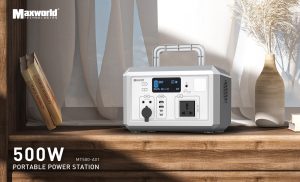Battery Energy Storage Systems-FAQs part 1
1. What exactly is an Battery Energy Storage Systems?
A device or collection of devices created that may store energy to provide electrical energy at a later time is known as an battery energy storage systems, or ESS. Our free fact sheet’s main topic, battery ESS, is the most popular new installation type. Solar battery storage is also one of the important directions.
2. What Benefits Does Battery Energy Storage Systems Offer?
There are several beneficial uses for ESS, such as:
Battery energy storage systems can store energy
Generally, solar and wind power will be only generated electricity during the sun is shining or the wind is blowing, respectively. Users can benefit from the electricity produced when the renewable energy technologies aren’t providing any by completing these with battery energy storage.
A Peak Shave
By pulling energy from the batteries during the more expensive daytime hours and then recharging during the less expensive nighttime hours, ESS enables a user to change where their electricity originates from. ESS can improve their home energy storage.
Load balancing
The system is stressed when power-producing facilities ramp up and ramp down to meet the fluctuating demand for electricity. By charging when electricity demand is low and discharging when demand is high, ESS can aid in flattening the demand curve.
Battery energy storage systems Can provide uninterrupted power
Hospitals, data centers, and residences frequently use uninterruptible power supplies (UPS), which can offer almost instantaneous protection from power outages.

3. Is the Battery Energy Storage Systems harmful?
The increase in ESS installations necessitates a deeper comprehension of the dangers involved and more extensive steps to lower the risks. The dangers consist of:
Infrared Runaway
The term “thermal runaway” refers to the sudden, uncontrollable discharge of heat energy from a battery cell that occurs when the battery produces more heat than it can efficiently expel. Neighboring cells may become heated as a result of a single cell’s thermal runaway. This process proceeds can cause a battery fire and explosion. For larger battery fires, this is frequently the cause of ignition.
Unused Energy
There are with most electrical equipment and this is shock risk, but what makes ESS special is that frequently, however, after being involved in the fire, there is still energy within the ESS. Since the terminals are frequently harmed and pose a risk to people doing overhauls following a fire, it is challenging to discharge. The fire may rekindle hours or even days later due to stranded energy.
The Production of Flammable and Toxic Gases
When batteries experience thermal runaway, the majority of them produce poisonous and combustible fumes. The ESS chamber or container may be developed with an explosive atmosphere when the gases do not ignite in advance the lower explosive limit is reached.
Deep-Sitting Fires
ESS typically consists of batteries that are contained in larger cabinets that have protective metal or plastic casings. These layers of defense can prevent water from reaching the fire’s hearth while also preventing system damage. TSincecooling the hottest section of the fire is frequently challenging, it requires a lot of water to dissipate the heat created by ESS fires efficiently

4. What are the modes of Battery Energy Storage Systems failure?
These are some possible battery failure modes, which frequently result in thermal runaway and consequent flames or explosions. Among these failure modes are: Mechanical Violence
When a battery is physically harmed—by being dropped, crushed, or penetrated—this is referred to as mechanical abuse. Thermal Neglect
When a battery is exposed to outside heat sources, thermal abuse may develop.Impacts on the environment
Seismic activity, rat damage to wiring, severe heat, and floods are a few environmental factors that might cause battery failure.
5. Which NFPA regulation addresses Battery Energy Storage Systems installation?
You can refer to the NFPA 855 standard, This is for the Installation of ESS when you are installing the ESS for either all new construction or renovation.
6. What is the most effective Battery Energy Storage Systems fire extinguishing agent?
According to testing, water is the best cooling solution for battery ESSs. Therefore, NFPA 855, which is a standard for the installation of ESS, mandates the application of Battery Energy Storage Systems that according to NFPA 13, which is for the installation of Sprinkler Systems.
7. Is it accurate to say that an Battery Energy Storage Systems can rekindle days after a fire has been put out?
Yes, hours, days, or even weeks after they have been damaged or involved in a fire, the lithium-ion batteries will have demonstrated their ability to ignite or rekindle.
8. Can a fire hose be used to put out a fire caused by a lithium-ion battery?
According to the UL, the water can be applied safely for voltages up to 1000 volts DC under the RIGHT circumstances, This investigation showed that applying water safely at a distance of 5 feet from a 1000 volt direct current electrical source required the use of an adjustable nozzle at a minimum 10-degree fog pattern; nonetheless, contact with pooling water could result in a shock due to its potential conductivity.












